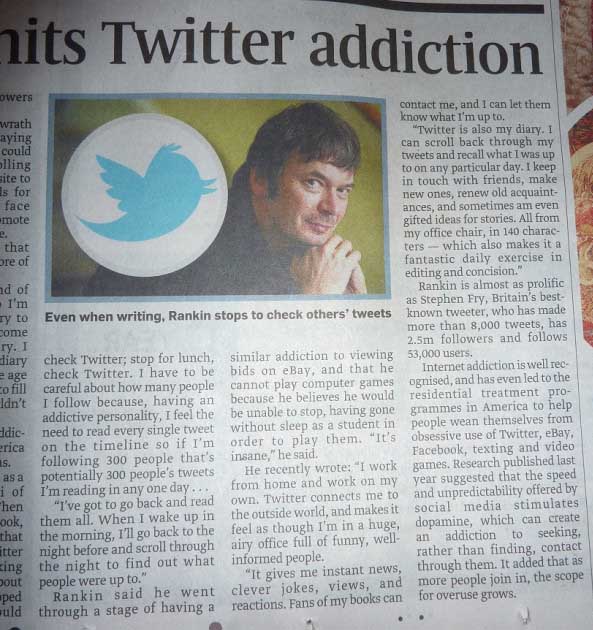[6/20/12 12:00 PM UPDATE: This story has been updated to reflect newly discovered examples of Jonah Lehrer lifting his own material. We have also discovered that Lehrer has plagiarized Malcolm Gladwell (see the example from Page 144). Also of interest to those following the story: Jacob Silverman’s piece for The Daily Beast, two new items from Jim Romenesko (Item 1 and Item 2), and Poynter’s Craig Silverman on how this is part of a Google Game. Additional updates to this story can be found at the end of this report.]
[6/22/12 4:15 PM UPDATE: Reluctant Habits has uncovered two more instances of Jonah Lehrer pilfering from Malcolm Gladwell’s work. Scroll to the bottom for the latest updates.]
It began with a Tuesday morning item from Jim Romenesko, in which the veteran journalist observed that material that Jonah Lehrer used in a Wall Street Journal piece published last October was repurposed by him for a June 12, 2012 New Yorker post.
Hours later, numerous other journalists were on the case, operating under the theory that a man who steals from himself once is likely to do so again. Daily Intel‘s Joe Coscarelli located additional examples, as did Jacob Silverman. By the end of the day, many of Lehrer’s pieces on The New Yorker contained editorial notes and regrets over the reused material. Laura Hazard Owen noted that “Lehrer shouldn’t be excused for cribbing from himself. But it’s not that surprising that it happened.”
What is surprising is that the material recycled in the New Yorker pieces is only the beginning.
On Tuesday night, Reluctant Habits learned that Lehrer’s had reused his own content on a vaster scale. It was all there, hiding in plain sight within his latest book, Imagine: How Creativity Works.
By Wednesday morning, more examples were discovered — including Lehrer plagiarizing a 2006 essay written by Malcolm Gladwell.
It’s worth pointing out that the book doesn’t include a notice informing the reader that the material had appeared elsewhere in similar form. (Lehrer did seek permission to reprint W.H. Auden’s “September 1, 1939,” but it apparently had not occurred to him that the various outlets he wrote for might require similar permissions. As of early Wednesday morning, it remains unknown if the various outlets who Lehrer reused material from will uphold copyright.)
Lehrer cut and pasted passages from his journalism throughout the first 150 pages of Imagine. In some cases, Lehrer used the same passage three times. In other cases, he would sometimes sandwich a sentence or a paragraph to fit it into the piece, almost assembling these stories like a Frankenstein monster composed of numerous parts.
Our initial search through Imagine‘s first 100 pages revealed about twelve pages of lifted passages. And these are just the examples that we happened to spot. Continued investigations revealed many more in the next 50 pages. What follows is a breakdown of material from previous Lehrer articles that resurfaced in Imagine.
* * *
“The Psychology of Architecture.” Wired: Frontal Cortex (April 14, 2011): “Or consider this 2009 experiment, published in Science. The psychologists, at the University of British Columbia, were interested in looking at how the color of interior walls influence the imagination. They recruited six hundred subjects, most of them undergraduates, and had them perform a variety of basic cognitive tests displayed against red, blue or neutral colored backgrounds.
“The differences were striking. When people took tests in the red condition – they were surrounded by walls the color of a stop sign – they were much better at skills that required accuracy and attention to detail, such as catching spelling mistakes or keeping random numbers in short-term memory. According to the scientists, this is because people automatically associate red with danger, which makes them more alert and aware.
“The color blue, however, carried a completely different set of psychological benefits. While people in the blue group performed worse on short-term memory tasks, they did far better on those requiring some imagination, such as coming up with creative uses for a brick or designing a children’s toy out of simple geometric shapes. In fact, subjects in the blue condition generated twice as many “creative outputs” as subjects in the red condition. That’s right: the color of a wall doubled our imaginative power.”
Imagine, p. 51: “Look at this recent experiment, published in Science. These psychologists, at the University of British Columbia, were interested in looking at how various colors influence the imagination. They recruited six hundred subjects, most of them undergraduates, and had them perform a variety of basic cognitive tests displayed against red, blue, or neutral backgrounds.
“The differences were striking. When people took tests in the red condition, they were much better at skills that required accuracy and attention to detail, such as catching spelling mistakes or keeping random numbers in short-term memory. According to the scientists, this is because people automatically associate red with danger, which makes them more alert and aware.
“The color blue, however, carried a completely different set of psychological benefits. While people in the blue group performed worse on short-term memory tasks, they did far better on those requiring some imagination, such as coming up with creative uses for a brick or designing a children’s toy out of simple geometric shapes. In fact, subjects in the blue condition generated twice as many creative outputs as did subjects in the red condition.”
* * *
“The Rewards of Revenge.” Wired: Frontal Cortex (May 2, 2011): “The answer returns us to the brain, and to the fascinating ways in which those three pounds of meat mirror the ideals of game theory.”
Imagine, p. 57: “The answer returns us to the brain and to the specific ways in which amphetamines alter the activity of neurons.”
* * *
“The Attention-Allocation Defecit.” Wired: Frontal Cortex (September 13, 2011): “While dopamine neurons are relatively rare, they are clustered in very specific areas in the center of the brain, such as the nucleus accumbens and ventral striatum. These cortical parts make up the dopamine reward pathway, the neural system that’s responsible for generating the pleasurable emotions triggered by pleasurable things. It doesn’t matter if we’re having sex or eating sugar or snorting amphetamine: These things fill us with bliss because they tickle these cells.”
Imagine, p. 59-60: “While dopamine neurons are relatively rare, they are clustered in specific areas in the center of the brain, such as the nucleus accumbens and the ventral striatum. These cortical parts make up the dopamine reward pathway, the neural highway that’s responsible for generating the pleasurable emotions triggered by pleasurable things. It doesn’t matter if it’s having sex or eating ice cream or snorting cocaine: these things fill us with bliss because they tickle these cells. Happiness begins here.”
* * *
“The Eureka Hunt.” The New Yorker (July 28, 2008): “Earl Miller is a neuroscientist at M.I.T. who has devoted his career to understanding the prefontal cortex. He has a shiny shaved head and a silver goatee. His corner office in the gleaming Picower Institute is cantilevered over a railroad track, and every afternoon the quiet hum of the lab is interrupted by the rattle of a freight train. Miller’s favorite word is ‘exactly’ — it’s the adverb that modifies everything, so that a hypothesis is ‘exactly right,’ or an experiment was ‘exactly done’ — and that emphasis on precision has defined his career. His first major scientific advance was a by-product of necessity. It was 1995, and Miller had just started his lab at M.I.T. His research involved recording directly from neurons in the monkey brain, monitoring the flux of voltage within an individual cell as the animals performed various tasks. ‘There were machines that allowed you to record eight or nine at the same time, but they were expensive,’ Miller said. ‘I still had no grants, and there was no way I could afford one.’ So Miller began inventing his own apparatus in his spare time. After a few months of patient tinkering, he constructed a messy tangle of wires, steel screws, and electrodes that could simultaneously record from numerous cells, distributed across the brain. ‘It worked even better than the expensive machine,’ Miller said.
“This methodological advance — it’s known as multiple electrode recording — allowed Miller to ask a completely new kind of scientific question. For the first time, it was possible to see how cells in different brain areas interacted. Miller was most interested in the interactions of the prefrontal cortex. ‘You name the brain area, and the prefrontal cortex is almost certainly linked to it,’ he said. It took more than five years of painstaking probing, as Miller recorded from cells in the monkey brain, but he was eventually able to show that the prefrontal cortex wasn’t simply an aggregator of information. Instead, it was like the conductor of an orchestra, waving its baton and directing the players.”
Imagine, p. 65-66: “Earl Miller has devoted his career to understanding the prefrontal cortex, that warehouse of working memory. He has a shiny shaved head and a silver goatee. His corner office in the gleaming Picower Institute at MIT is cantilevered over an old freight-train track, so every afternoon the quiet hum of the lab is interrupted by the rattle of a locomotive. Miller’s favorite word is exactly — it’s the adverb that modifies everything, so a hypothesis was ‘exactly right’ or an experiment was ‘exactly done’ — and that emphasis on precision has defined his career. His first major scientific advance was a byproduct of necessity. It was 1995 and Miller had just started his lab, which meant that he had no money. His research involved recording the activity of neurons in the monkey brain, monitoring the flux of voltage within an individual cell as the animal performed various tasks. ‘There were machines that allowed you to record from eight or nine [neurons] at the same time, but they were very expansive,’ Miller says. ‘I still had no grants, and there was no way I could afford one.’ So Miller began inventing his own apparatus in his spare time. After a few months of tinkering, he constructed a messy tangle of wires, glass pipettes, and electrodes that could record simultaneously from numerous cells distributed across the monkey cortex. ‘It worked even better than the expansive machine,’ Miller says. ‘And then we just made the units smaller and smaller, which meant we could record more and more neurons.
“This methodological advance — it’s known as multiple-electrode recording — allowed Miller to watch information zip around the brain as the electrical cells interacted with one another. Miller was most interested in studying the prefrontal cortex, though, since this brain area is such an aggregator of information. ‘It’s where everything projects to,’ Miller says. ‘It’s literally where the world comes together.'”
* * *
Jacob Silverman uncovered this example:
“Depression’s Upside.” The New York Times Magaziner (February 26, 2010): “Last year Forgas ventured beyond the lab and began conducting studies in a small stationery store in suburban Sydney, Australia. The experiment itself was simple: Forgas placed a variety of trinkets, like toy soldiers, plastic animals and miniature cars, near the checkout counter. As shoppers exited, Forgas tested their memory, asking them to list as many of the items as possible. To control for the effect of mood, Forgas conducted the survey on gray, rainy days — he accentuated the weather by playing Verdi’s ‘Requiem’ — and on sunny days, using a soundtrack of Gilbert and Sullivan. The results were clear: shoppers in the ‘low mood’ condition remembered nearly four times as many of the trinkets. The wet weather made them sad, and their sadness made them more aware and attentive.”
“Does Depression Help Us Think Better?” Wired: Frontal Cortex (May 9, 2011): “In 2009, Forgas ventured beyond the lab and began conducting studies in a small stationery store in suburban Sydney, Australia. The experiment itself was simple: Forgas placed a variety of trinkets, like toy soldiers, plastic animals and miniature cars, near the checkout counter. As shoppers exited, Forgas tested their memory, asking them to list as many of the items as possible. To control for the effect of mood, Forgas conducted the survey on gray, rainy days — he accentuated the weather by playing Verdi’s ‘Requiem’ — and on sunny days, using a soundtrack of Gilbert and Sullivan. The results were clear: shoppers in the ‘low mood’ condition remembered nearly four times as many of the trinkets. The wet weather made them sad, and their sadness made them more aware and attentive.”
But Reluctant Habits discovered the passage again in Imagine, p. 76-77: “The experiment itself was simple: Forgas placed a variety of trinkets such as toy soldiers, plastic animals, and miniature cars near the checkout counter. As shoppers exited, Forgas tested their memory, asking them to list as many of the items as possible. To control the mood of the subgjects, when Forgas conducted the survey on gray, rainy dAays, he accentuated the weather by playing Verdi’s Requiem; on sunny days, he used a chipper soundtrack of Gilbert and Sullivan. The results were clear: shoppers in the ‘low mood’ condition remembered nearly four times as many of the trinkets. The wet weather made them sad, and their sadness made them more attentive.”
* * *
And here’s another three-peat.
“The Creativity of Anger.” Wired: Frontal Cortex (August 29, 2011): “The students were randomly assigned to either a positive or negative feedback condition, in which their speech was greeted with smiles and vertical nods (positive) or frowns and horizontal shakes (negative). After the speech was over, the subjects were given glue, paper and colored felt and told to make a collage using the materials. Professional artists then evaluated each collage according to various metrics of creativity.
“Not surprisingly, the feedback impacted the mood of the subjects: Those who received smiles during their speeches reported feeling better than before, while frowns had the opposite effect. What’s interesting is what happened next: Subjects in the negative feedback condition created much prettier collages. Their angst led to better art. As Akinola notes, this is largely because the sadness improved their focus, and made them more likely to persist with the creative challenge:”
“Feeling Sad Makes Us More Creative.” Wired: Frontal Cortex (October 19, 2010): “The students were randomly assigned to either a positive or negative feedback condition, in which their speech was greeted with smiles and vertical nods (positive) or frowns and horizontal shakes (negative). After the speech was over, the subjects were given glue, paper and colored felt and told to create a collage using the materials. Professional artists then evaluated each collage for creativity.”
Imagine, p. 77-78: “The students were randomly assigned to either a positive- or a negative-feedback condition; in the positive-feedback condition, speeches were greeted with smiles and vertical nods, and in the negative, speeches met frowns and horizontal shakes. After the speech was over, the subject was given glue, paper, and colored felt and told to make a collage using the materials. Professional artists then evaluated each collage according to various metrics of creativity.
“Not surprisingly, the feedback affected the mood of the subjects: those who received smiles during their speeches reported feeling better than before, while frowns had the opposite effect. What’s interesting is what happened next. Subjects in the negative-feedback condition created much prettier collages. Their angst led to better art. As Akinoda notes, this is largely because the sadness improved their focus and made them more likely to persist with the creative challenge. As a result, they kept on rearranging the felt, playing with the colorful designs.”
* * *
“Depression’s Upside.” The New York Times Magaziner (February 26, 2010): “The enhancement of these mental skills might also explain the striking correlation between creative production and depressive disorders. In a survey led by the neuroscientist Nancy Andreasen, 30 writers from the Iowa Writers’ Workshop were interviewed about their mental history. Eighty percent of the writers met the formal diagnostic criteria for some form of depression. A similar theme emerged from biographical studies of British writers and artists by Kay Redfield Jamison, a professor of psychiatry at Johns Hopkins, who found that successful individuals were eight times as likely as people in the general population to suffer from major depressive illness.
“Why is mental illness so closely associated with creativity? Andreasen argues that depression is intertwined with a ‘cognitive style’ that makes people more likely to produce successful works of art. In the creative process, Andreasen says, ‘one of the most important qualities is persistence.’ Based on the Iowa sample, Andreasen found that “successful writers are like prizefighters who keep on getting hit but won’t go down. They’ll stick with it until it’s right.” While Andreasen acknowledges the burden of mental illness — she quotes Robert Lowell on depression not being a ‘gift of the Muse’ and describes his reliance on lithium to escape the pain — she argues that many forms of creativity benefit from the relentless focus it makes possible. ‘Unfortunately, this type of thinking is often inseparable from the suffering,’ she says. ‘If you’re at the cutting edge, then you’re going to bleed.'”
Imagine, p. 78-79: “The enhancement of these mental skills during states of sadness might also explain the striking correlation between creativity and depressive disorders. In the early 1980s, Nancy Andreasen, a neuroscientist at the University of Iowa, interviewed several dozen writers from the Iowa Writers’ Workshop about their mental history. While Andreasen expected the artists to suffer from schizophrenia at a higher rate than normal — ‘There is that lingering cliche about madness and genius going together,’ she says — that hypothesis turned out to be completely wrong. Instead, Andreasen found that 80 percent of the writers met the formal diagnostic criteria for some type of depression. These successful artists weren’t crazy — they were exceedingly sad. A similar theme emerged from biographical studies of British novelists and poets done by Kay Redfield Jamison, a professor of psychiatry at Johns Hopkins. According to her data, famous writers were eight times as likely as people in the general population to suffer from major depressive illnesses.
“Why is severe sadness so closely associated with creativity? Andreasen argues that depression is intertwined with a ‘cognitive style’ that makes people more likely to produce successful works of art. Her explanation is straightforward: It’s not easy to write a good novel or compose a piece of music. The process often requires years of careful attention as the artist fixes mistakes and corrects errors. As a result, the ability to stick with the process — to endure the unconcealing — is extremely important. ‘Successful writers are like prizefighters who keep on getting hit but won’t go down,’ Andreasen says. ‘They’ll stick with it until it’s right. And that seems to be what the mood disorders help with.’ While Andreasen acknowledges the terrible burden of mental illness — she quotes Robert Lowell on depression not being a ‘gift of the Muse’ and describes his reliance on lithium to escape the pain — she argues that, at least in its milder forms, the disorder benefits many artists due to the perseverance it makes possible. ‘Unfortunately, this type of thinking is often inseparable from the suffering,’ Andreasen says. ‘If you’re at the cutting edge, then you’re going to bleed.'”
* * *
“Basketball and Jazz.” Wired: Frontal Cortex (June 6, 2011): “As expected, the act of improv led to a surge of activity in a variety of neural areas, including the premotor cortex and the inferior frontal gyrus. The premotor activity is simply an echo of execution, as the new musical patterns are translated into bodily movements. The inferior frontal gyrus, however, has primarily been investigated for its role in language and the production of speech. Why, then, is it so active when people improvise music? Berkowitz argues that expert musicians invent new melodies by relying on the same mental muscles used to create a sentence; every note is like another word.
“Of course, the development of these patterns requires years of practice, which is why Berkowitz compares improvisation to the learning of a second language. At first, it’s all about the vocabulary, as students must memorize a dizzying number of nouns, adjectives and verb conjugations. Likewise, musicians need to immerse themselves in the art, internalizing the intricacies of Miles and Coltrane. After years of study, the process of articulation starts to become automatic – the language student doesn’t need to contemplate her verb charts before speaking, just as the musician can play without worrying about the movement of his fingers. It’s only at this point, after expertise has been achieved, that improvisation can take place. When the new music is needed, the notes are simply there, waiting to be expressed.”
Imagine, p. 92-93: “As expected, the various improv conditions — regardless of the musical genre — led to a surge of activity in a variety of neural areas, including the premotor cortex and the inferior frontal gyrus. The premotor activity is simply an echo of execution, as the new musical patterns are translated into bodily movements. The inferior frontal gyrus, however, is most closely associated with language and the production of speech. Why, then, is it so active when people compose on the spot? The scientists argue that expert musicians invent new melodies by relying on the same mental muscles used to create a sentence; every note is like a word. ‘Those bebop players play what sounds like seventy notes within a few seconds,’ says Aaron Berkowitz, the lead author on the Harvard study. ‘There’s no time to think of each individual note. They have to have some patterns in their toolbox.’
“Of course, the development of these patterns requires years of practice, which is why Berkowitz compares improvisation to the learning of a second language. At first, he says, it’s all about the vocabulary words; students must memorize a dizzying number of nouns, adjectives, and verb conjugations. Likewise, musicians need to immerse themselves in the art, internalizing the intricacies of Shostakovich or Coltrane or Hendrix. After musicians have studied for years, however, the process of articulation starts to become automatic — the language student doesn’t need to contemplate her verb charts before speaking, just as the musician can play without worrying about the movement of his fingers. It’s only at this point, after expertise has been achieved, that improvisation can take place. When the new music is needed, the notes are simply there, waiting to be expressed. It looks easy because they have already worked so hard.”
* * *
The first several paragraphs of “Clay Marzo: Liquid Cure.” Outside (August 26, 2009) are nearly identical (with cut sentences) to Imagine, p. 93-98.
* * *
This example shows Lehrer repurposing in reverse: material from Imagine shifts into material for his new gig at The New Yorker:
Imagine, P. 107: “Take a 2004 paper published in Nature by the neuroscientists Ullrich Wagner and Jan Born. The researchers gave a group of students a tedious task that involved transforming a long list of number strings into a new set of number strings. Wagner and Born designed the task so that there was an elegant shortcut, but it could only be uncovered if the subject had an insight about the problem. When people were left to their own devices, less than 20 percent of them found the shortcut, even when given several hours to mull over the task. The act of dreaming, however, changed everything: after people were allowed to lapse into REM sleep, nearly 60 percent of them were able to discover the secret pattern. Kierkegaard was right. Sleeping is the height of genius.”
“The Virtues of Daydreaming.” The New Yorker: Frontal Cortex (June 5, 2012): “Take a 2004 paper published in Nature by the neuroscientists Ullrich Wagner and Jan Born. The researchers gave a group of students a tedious task that involved transforming a long list of number strings into a new set of number strings. Wagner and Born designed the task so that there was an elegant shortcut, but it could only be uncovered if the subject had an insight about the problem. When people were left to their own devices, less than twenty per cent of them found the shortcut, even when given several hours to mull over the task. The act of dreaming, however, changed everything: after people were allowed to lapse into R.E.M. sleep, nearly sixty per cent of them discovered the secret pattern. Kierkegaard was right: sleeping is the height of genius.”
* * *
“Why We Need to Dream.” The New York Times: Opinionator (March 19, 2010): “Or look at a recent paper published by Sara Mednick, a neuroscientist at the University of California, San Diego. She gave subjects a variety of remote-associate puzzles, which require subjects to find a word that’s associated with three other seemingly unrelated words. ”
Imagine, p. 107: “Or consider a recent paper published by Sara Mednick, a neuroscientist at the University of California, San Diego. She gave subjects a variety of remote-association puzzles.”
* * *
“Fleeting Youth, Fading Creativity.” The Wall Street Journal (February 19, 2010): “The inverted U curve was first documented by Adolphe Quetelet, a 19th-century French mathematician and sociologist. Mr. Quetelet’s study was simple: He plotted the number of plays produced by French and English playwrights over the course of their life spans. He soon discovered that creativity had a sweet spot, which seemed to always occur between the ages of 25 and 50. (The data neatly confirmed Mr. Quetelet’s own life story, as he was 39 when his magnum opus was published.)
“Dean Simonton, a psychologist at the University of California, Davis, has spent the last several decades expanding on Mr. Quetelet’s approach, sifting through vast amounts of historical data in search of underlying patterns. For instance, Mr. Simonton has shown that physicists tend to make their first important discovery in their late 20s, which is why it’s a common joke within the field that if a physicist hasn’t done Nobel-worthy work before getting married, then he or she might as well quit. According to Mr. Simonton, the only field that peaks before physics is poetry.
“Why are young physicists and poets more creative? Mr. Simonton argues that they benefit, at least in part, from their willingness to embrace novelty and surprise. Because they haven’t become ‘encultured,’ or weighted down with too much conventional wisdom, they’re more willing to rebel against the status quo. After a few years in the academy, however, ‘creators start to repeat themselves, so that it becomes more of the same-old, same-old,’ Mr. Simonton says.”
Imagine, p. 123-4: “The practical advantages of youth were first identified by Adolphe Quetelet, a nineteenth-century French mathematician. Quetelet’s project was simple: he plotted the number of successful plays produced by playwrights over the course of their careers. That’s when he discovered something unexpected: creativity doesn’t increase with experience. The playwrights weren’t getting better at writing plays. Instead, the curve exhibited a steep rise followed by a long, slow decline, a phenomenon of creative output now known as the inverted U curve. According to Quetelet, his curve demonstrated tends to peak after a few years of work — when we know enough, but not too much — before it starts to fall, in middle age.
“Dean Simonton, a psychologist at UC Davis, has spent the last several decades expanding on Quetelet’s approach, sifting through vast amounts of historical data in search of the subtle patterns that influence creative production over time. For instance, Simonton has shown that physicists tend to make their most important discoveries early in their careers, typically before the age of thirty. The only field that peaks before physics is poetry.
“Why are young physicists and poets more creative? One possibility is that time steals ingenuity, that the imagination starts to wither in middle age. But that’s not the case — we are not biologically destined to get less creative. Simonton argues that youth benefit from their outsider status — they’re innocent and ignorant, which makes them more willing to embrace radical new ideas. Because they haven’t become encultured, or weighted down with too much conventional wisdom, they’re more likely to rebel against the status quo. After a few years in the academy, Simonton says, the ‘creators start to repeat themselves, so that it becomes more of the same-old, same-old.’ They have become insiders.”
* * *
Lehrer used the paragraphs below either three or four times, although the initial 2010 Observer article may have been republished in whole by McSweeney’s (the article is not available online).
“Why We Travel.” The Observer (March 13, 2010): “The reason such travels are mentally useful involves a quirk of cognition, in which problems that feel ‘close’ – and the closeness can be physical, temporal or even emotional – get contemplated in a more concrete manner. As a result, when we think about things that are nearby, our thoughts are constricted, bound by a more limited set of associations. While this habit can be helpful – it allows us to focus on the facts at hand – it also inhibits our imagination. Consider a field of corn. When you’re standing in the middle of the field, surrounded by the tall cellulose stalks and fraying husks, the air smelling faintly of fertiliser and popcorn, your mind is automatically drawn to thoughts that revolve around the primary meaning of corn, which is that it’s a plant, a cereal, a staple of farming.
“But now imagine that same field of corn from a different perspective. Instead of standing on a farm, you’re now in the midst of a crowded city street, dense with taxis and pedestrians. (And yet, for some peculiar reason, you’re still thinking about corn.) The plant will no longer just be a plant: instead, your vast neural network will pump out all sorts of associations. You’ll think about glucose-fructose syrup, obesity and Michael Pollan, author of In Defense of Food; ethanol made from corn stalks, popcorn at the cinema and creamy polenta simmering on a wood stove in Emilia Romagna. The noun is now a web of tangents, a loom of remote connections.
“What does this have to do with travel? When we escape from the place we spend most of our time, the mind is suddenly made aware of all those errant ideas we’d suppressed. We start thinking about obscure possibilities – corn can fuel cars – that never would have occurred to us if we’d stayed back on the farm. Furthermore, this more relaxed sort of cognition comes with practical advantages, especially when we’re trying to solve difficult problems.
“Look, for instance, at a recent experiment led by the psychologist Lile Jia at Indiana University. He randomly divided a few dozen undergrads into two groups, both of which were asked to list as many different modes of transportation as possible. (This is known as a creative generation task.) One group of students was told that the task was developed by Indiana University students studying abroad in Greece (the distant condition), while the other group was told that the task was developed by Indiana students studying in Indiana (the near condition). At first glance, it’s hard to believe that such a slight and seemingly irrelevant difference would alter the performance of the subjects. Why would it matter where the task was conceived?
“Nevertheless, Jia found a striking difference between the two groups: when students were told that the task was imported from Greece, they came up with significantly more transportation possibilities. They didn’t just list buses, trains and planes; they cited horses, triremes, spaceships, bicycles and even Segway scooters. Because the source of the problem was far away, the subjects felt less constrained by their local transport options; they didn’t just think about getting around in Indiana – they thought about getting around all over the world and even in deep space.
“In a second study, Jia found that people were much better at solving a series of insight puzzles when told that the puzzles came all the way from California and not from down the hall.”
“The Importance of Vacation.” Wired: Frontal Cortex (January 3, 2011): Lehrer excerpts two paragraphs of the “Consider a feel of corn” part of the above passage, pointing out that he “wrote about this last year in McSweeney’s (not online).” He then follows up his blockquote with the “original” section below (which can be found on Imagine, p. 126:
“And this is why vacation is so helpful: When we escape from the places where we spend most of our time, the mind is suddenly made aware of all those errant ideas we’d previously suppressed. We start thinking about obscure possibilities — corn can fuel cars! — that never would have occurred to us if we’d checked in with the office everyday.”
Did the San Francisco Panorama edition of McSweeney’s republish Lehrer’s article in print? I don’t have a copy of it here. But this Susan Perry post suggests that either the entire article was republished or Lehrer recycled much of the text for a piece on “Why do we travel?”
This particular example allows us to observe Lehrer’s tendency to modify a few words in a sentence and pass it off as “original” material. Because by the time the Observer paragraphs have been recycled in Imagine, they haven’t changed much at all, save for what Lehrer added in his Wired post. Note how travel turns from something “mentally useful” to “useful for creativity.” It is as if this is a Mad Libs session.
Imagine, p. 125-127: “The reason travel is so useful for creativity involves a quirk of cognition in which problems that feel close get contemplated in a more literal manner. This means that when we are physically near the source of the problem, our thoughts are automatically constricted, bound by a more limited set of associations. While this habit can be helpful — it allows us to focus on the facts at hand — it also inhabits the imagination.
“Consider a field of corn. When you’re standing in the middle of a farm surrounded by the tall cellulose stalks and fraying husks, the air smelling faintly of fertilizer and popcorn, your mind is automatically drawn to thoughts related to he primary definition of corn, which is that it’s a plant, a cereal, a staple of midwestern farming. But imagine that same field of corn from a different perspective. Instead of standing on a farm, you’re now in a crowded city street dense with taxis and pedestrians. The plant will no longer be just a plant; instead, your vast neural network will pump out all sorts of associations. You’ll think about high-fructose corn syrup, obesity, and the Farm Bill: you’ll contemplate ethanol and the Iowa caucuses, those corn mazes for kids at state fairs, and the deliciousness of succotash made with bacon and lima beans. The noun is now a web of tangents: a vast loom of connections.
“And this is why travel is so helpful: When you escape from the place you spend most of your time, the mind is suddenly made aware of all those errant ideas previously suppressed. You start thinking about obscure possibilities — corn can fuel cars! — that never would have occurred to you if you’d stayed back on the farm. Furthermore, this expansive kind of cognition comes with practical advantages, since you can suddenly draw on a whole new set of possible solutions.
“Look, for instance, at a recent experiment led by the psychologist Lile Jia at Indiana University. He randomly divided a few dozen undergraduates into two groups, each of which were asked to list as many different modes of transportation as possible. (This is known as a creative generation task.) One group of students was told that the task was conceived by Indiana University students studying abroad in Greece, while the other group was told that it was conceived by Indiana students studying in Indiana. At first, it’s hard to believe that such a slight and seemingly irrelevant distinction would alter the performance of the subjects. Why would it matter where the task originated?
“Nevertheless, Jia found a striking distance between the two groups: when students were told that the task has imported from Greece, they came up with significantly more transportation possibilities. They didn’t limit their list to cars, buses, trains, and planes; they cited horses, triremes, spaceships, bicycles, and Segway scooters. Because the source of the problem was far away, the subject felt less constrained by their local transport options; they didn’t think about getting around just in Indiana, they thought about getting around all over the world.
“In a second study, Jia found that Indiana University students were much better at solving a series of insight puzzles when told that the puzzles came from California and not from Indiana. Here’s a sample problem:”
* * *
“Sunset of the Solo Scientist.” The Wall Street Journal (February 5, 2011): “By analyzing 19.9 million peer-reviewed papers and 2.1 million patents, Mr. Jones and his colleagues at Northwestern were able to show that teamwork is a defining trend of modern research. Over the last 50 years, more than 99% of scientific subfields, from computer science to biochemistry, have experienced increased levels of teamwork, with the size of the average team increasing by about 20% per decade.
“This shift is even more pronounced among influential papers. While the most cited studies in a field used to be the product of lone geniuses, Mr. Jones has shown that the best research now emerges from groups. It doesn’t matter if the scientists are studying particle physics or human genetics. Papers by multiple authors receive more than twice as many citations as those with one author. This trend is even more apparent when it comes to ‘home run papers’—those publications with at least 1,000 citations—which are more than six times as likely to come from a team.”
Imagine, p. 140: “By analyzing 19.9 million peer-reviewed papers and 2.1 million patents from the last fifty years, Jones was able to show that more than 99 percent of scientific subfields have experienced increased levels of teamwork, with the size of the average team increasing by about 20 percent per decade. While the most cited studies in a field used to be the product of lone geniuses — think Einstein or Darwin — Jones has demonstrated that the best research now emerges from groups. It doesn’t matter if the researchers are studying particle physics or human genetics: science papers produced by multiple authors are cited more than twice as often as those authored by individuals. This trend was even more apparent when it came to ‘home-run papers’ — those publications with at last a thousand citations — which were more than six times as likely to come from a team of scientists.”
* * *
There is also quite a good deal of overlap in “Groupthink.” The New Yorker (January 30, 2012) and the “Power of Q” chapter in Imagine. Lehrer didn’t just use the sample chapter from his book. He rearranged his material and tried to pass off his piece as a brand new article about brainstorming. The first part of the article (starting with the Alex Osborn material) seems to be pilfered from Imagine, p. 158-161. Then, Lehrer incorporates the Brian Uzzi material from Imagine, p. 140-144.
* * *
The biggest surprise was that Jonah Lehrer didn’t confine his theft to his own material. He also plagiarized material from Malcolm Gladwell.
Malcolm Gladwell, “The Formula.” The New Yorker (October 16, 2006): “One of the highest-grossing movies in history, ‘Raiders of the Lost Ark,’ was offered to every studio in Hollywood, Goldman writes, and every one of them turned it down except Paramount: ‘Why did Paramount say yes? Because nobody knows anything. And why did all the other studios say no? Because nobody knows anything. And why did Universal, the mightiest studio of all, pass on Star Wars? . . . Because nobody, nobody—not now, not ever—knows the least goddamn thing about what is or isn’t going to work at the box office.'”
Jonah Lehrer, Imagine, p. 144: “For instance, one of the highest-grossing movies in history, Raiders of the Lost Ark, was offered to every studio in Hollywood, and every one of them turned it down except Paramount: ‘Why did Paramount say yes?’ Goldman asks. ‘Because nobody knows anything. And why did all the other studios say no? Because nobody knows anything. And why did Universal, the mightiest studio of all, pass on Star Wars…? Because nobody, nobody — not now, not ever — knows the least goddam thing about what is or isn’t going to work at the box office.'”
* * *
“Steve Jobs: ‘Technology Alone is Not Enough.'” The New Yorker (October 7, 2011): Since 1995, when the first ‘Toy Story’ was released, Pixar has created twelve feature films. Every one of those films has been a commercial success, with an average international gross of more than $550 million per film. Not even Apple has enjoyed that kind of streak.”
Imagine, p. 144: “Since 1995, when the first Toy Story was released, Pixar has created eleven feature films. Every one of those films has been a commercial success, with an average international gross of more than $550 million per film.”
* * *
Here’s another three-peat. Observe in this next Lerher recycling how Lehrer adopts Darla Anderson’s as his own editorial voice.
“The Steve Jobs MBA Unit 103: Connect your people.” Wired UK (June 22, 2011): “The Pixar studios are set in an old canning factory, just north of Oakland, California. The original design called for three buildings, with separate offices for the computer scientists, animators and management. The smaller buildings were cheaper to build, but Jobs scrapped the plan. (‘We used to joke that the building was Steve’s movie,’ says Ed Catmull, the current president of Pixar. ‘He really oversaw everything.’) Jobs completely re-imagined the studio. Instead of three buildings, there was a single vast space, with an airy atrium at its centre. ‘The philosophy behind this design is that it’s good to put the most important function at the heart of the building,’ Catmull says. ‘Our most important function is the interaction of our employees. He wanted to create an open area for people to always be talking to each other.’
“But he needed to force people to go there. He began with the mailboxes, which he shifted to the lobby, then moved the meeting rooms to the centre of the building, followed by the cafeteria, coffee bar and gift shop. Jobs eventually decided to locate the bathrooms in the atrium. He believed that the best meetings happened by accident. And he was right. Pixar employees say that many of their best ideas arrive not while sat at their desk, but when they’re having a bowl of cereal with a colleague or having a chat in the bathroom.”
Imagine, p. 149-150: “Pixar Animation Studios is set in an old Del Monte canning factory just north of Oakland. The studio originally planned to build something else, an architectural design that called for three buildings, with separate offices for the computer scientists, animators, and management. While the layout was cost-effective — the smaller, specialized buildings were cheaper to build — Steve Jobs scrapped the plan. (‘We used to joke that the building was Steve’s movie,’ Catmull says. ‘He really oversaw everything.’) Before long, Jobs had completely reimagined the studio. Instead of three buildings, there was going to be a single vast space with an airy atrium at its center. ‘The philosophy behind this design is that it’s good to put the most important function at the heart of the building,’ Catmull says. ‘Well, what’s our most important function? It’s the interaction of our employees. That’s why Steve put a big empty space there. He wanted to create an open area for people to always be talking to each other.
“But Jobs realized that it wasn’t enough simply to create an airy atrium; he needed to force people to go there. Jobs began with the mailboxes, which he shifted to the lobby. Then he moved the meeting rooms to the center of the building, followed by the cafeteria and coffee bar and gift shop. But that still wasn’t enough, which is why Jobs eventually decided to locate the only set of bathrooms in the atrium. ‘At first, I thought this was the most ridiculous idea,’ says Darla Anderson, an executive producer on several Pixar films. ‘I have gone to the bathroom every thirty minutes. I didn’t want to have to walk all the way to the atrium every time I needed to go. That’s just a waste of time. But Steve said, ‘Everybody has to run into each other.’ He really believed that the best meetings happened by accident, in the hallway or parking lot. And you know what? He was right. I get more done having a bowl of cereal and striking up a conversation or walking to the bathroom and running into unexpected people than I do sitting at my desk.'”
And Lehrer also recycled this again for a completely different story:
“Groupthink.” The New Yorker (January 30, 2012): “Walter Isaacson’s recent biography of Jobs records that when Jobs was planning Pixar’s headquarters, in 1999, he had the building arranged around a central atrium, so that Pixar’s diverse staff of artists, writers, and computer scientists would run into each other more often. ‘We used to joke that the building was Steve’s movie,” Ed Catmull, the president of both Disney Animation and Pixar Animation, says. “He really oversaw everything.’
“Jobs soon realized that it wasn’t enough simply to create an airy atrium; he needed to force people to go there. He began with the mailboxes, which he shifted to the lobby. Then he moved the meeting rooms to the center of the building, followed by the cafeteria, the coffee bar, and the gift shop. Finally, he decided that the atrium should contain the only set of bathrooms in the entire building. (He was later forced to compromise and install a second pair of bathrooms.) ‘At first, I thought this was the most ridiculous idea,’ Darla Anderson, a producer on several Pixar films, told me. ‘I didn’t want to have to walk all the way to the atrium every time I needed to do something. That’s just a waste of time. But Steve said, ‘Everybody has to run into each other.’ He really believed that the best meetings happened by accident, in the hallway or parking lot. And you know what? He was right. I get more done having a cup of coffee and striking up a conversation or walking to the bathroom and running into unexpected people than I do sitting at my desk.'”
(This anecdote appears in different form in Walter Isaacson’s Steve Jobs, p. 430-431. But while Lehrer recycled his own material, it appears in this instance that he did indeed conduct independent interviews, as Imagine‘s endnotes specify.)
[EDITORIAL NOTE: An earlier version of this story misreported Tuesday as “Monday.” Reluctant Habits regrets the error and pledges to look at the calendar more regularly.]
6/20/12 3:00 PM UPDATE: Publishers Marketplace News Editor Sarah Weinman has received an official statement from Houghton Mifflin Harcourt, the publisher of Imagine.
6/20/12 4:00 PM UPDATE: Concerning the Gladwell and Lehrer plagiarism charge, NPR’s David Folkenflik has pointed out that both Malcolm Gladwell and Jonah Lehrer compressed William Goldman’s Adventures in the Screen Trade at the same spot. As Folkenfik rightly notes, the devil is in the ellipses.
6/20/12 4:20 PM UPDATE: Poynter’s Andrew Beaujon has just noted that Lehrer offered quotes from Noam Chomsky as if they’d been told directly to him, dropping key details. (This is actually quite similar to what Lehrer did with Darla Anderson’s quote in the example I cited above, taking her words as his own.) Beaujon has also discovered lifting from 2007 Seed article, repurposed in 2010 New York Times Magazine article. You can check out Beaujon’s findings here.
6/20/12 5:30 PM UPDATE: The New York Times‘s Jennifer Schuessler reports that she reached Jonah Lehrer by telephone. “It was a stupid thing to do and incredibly lazy and absolutely wrong,” said Lehrer.
6/22/12 4:15 PM UPDATE: There have been a number of developments in the last 48 hours. First off, New Yorker editor David Remnick has told Marketwatch that Lehrer will not be fired. “There are all kinds of crimes and misdemeanors in this business,” said Remnick to MarketWatch‘s Jon Friedman on Wednesday afternoon, “and if he were making things up or appropriating other people’s work that’s one level of crime.” Malcolm Gladwell has left a comment on this post and on Jack Shafer’s report: “If Lehrer is plagiarizing me, by quoting the same quote I quoted, then I am plagiarizing the person who used that quote before me, and that person is plagiarizing the person who quoted it before them, and so on and so forth, and we have a daisy chain of “plagiarizing” going back forty years and plagiarism, as a ethical concept, has ceased to mean anything at all.” But as has already been pointed out, Lehrer didn’t just quote the same Goldman quote. He used the exact same introductory phrasing and elided the exact same words as Gladwell did.
Furthermore, Reluctant Habits has discovered that Jonah Lehrer pilfered from Malcolm Gladwell at least two more times. And these examples, featuring closely similar language, don’t involve quotes at all.
* * *
Malcolm Gladwell, “Designs for Working.” The New Yorker (December 11, 2000): “Allen found that the likelihood that any two people will communicate drops off dramatically as the distance between their desks increases: we are four times as likely to communicate with someone who sits six feet away from us as we are with someone who sits sixty feet away. And people seated more than seventy-five feet apart hardly talk at all.”
Jonah Lehrer, Imagine, p. 153: “…he came up with the likelihood that any two people in the same office will communicate. The curve is steep: according to Allen, a person is ten times more likely to communicate with a colleague who sits at a neighboring desk than with someone who sits more than fifty meters away.”
* * *
Malcolm Gladwell, “Designs for Working.” The New Yorker (December 11, 2000): “It had short blocks, and short blocks create the greatest variety in foot traffic. It had lots of old buildings, and old buildings have the low rents that permit individualized and creative uses. And, most of all, it had people, cheek by jowl, from every conceivable walk of life..”
Jonah Lehrer, Imagine, p. 182: “The Village had short city blocks, which were easier for pedestrians to navigate. It had lots of old buildings — Jacob’s street was mostly nineteenth-century tenements and townhouses — with relatively cheap rents, and cheap rents encouraged a diversity of residents.”
* * *
There was also another strange recycling that was uncovered by San Francisco Chronicle Books Editor John McMurtrie (and helpfully passed along to me by the ever vigilant Jack Shafer), where Lehrer took a sentence from his first book and reproduced it as the lede to a book review:
Proust Was a Neuroscientist, p. 185: “The most mysterious thing about the human brain is that the more we know about it, the deeper our own mystery becomes.”
Review of Out of Our Heads, by Alva Noë. The San Francisco Chronicle (March 1, 2009): “The most mysterious thing about the human brain is that the more we know about it, the deeper our own mystery becomes.”
So now we know that Lehrer’s recycling isn’t a recent phenomenon.
Last but not least, I was contacted by Poynter’s Andrew Beaujon for a story on how I put together what Beaujon has called “the Starr Report of the Lehrer affair.” My thanks to Mr. Beaujon for taking the time out to talk with me, to include me in Poynter, and for his many amusing literary references to this piece. Additionally, I got so caught up with this story that I neglected to mention that I interviewed Lehrer back in April for my radio program, The Bat Segundo Show, where I put forth many questions to Lehrer about what critics had then singled out as reductionism.
7/31/12 UPDATE: Tablet‘s Michael Moynihan investigated Lehrer further and learned that Lehrer had fabricated quotes for Imagine. Lehrer has resigned from The New Yorker. The New York Times‘s Julie Bosman has statements from Lehrer and editor David Remnick. Houghton Mifflin Harcourt announced that it would recall print copies of Imagine.
9/1/12 UPDATE: In perhaps the most comprehensive Jonah Lehrer investigation yet, Charles Seife discovers numerous instances of plagiarism, dodgy quotes, and factual inaccuracies. The kicker is that Seife was asked to do this for Wired, but the magazine refused to publish Seife’s findings. Wired has issued a statement.





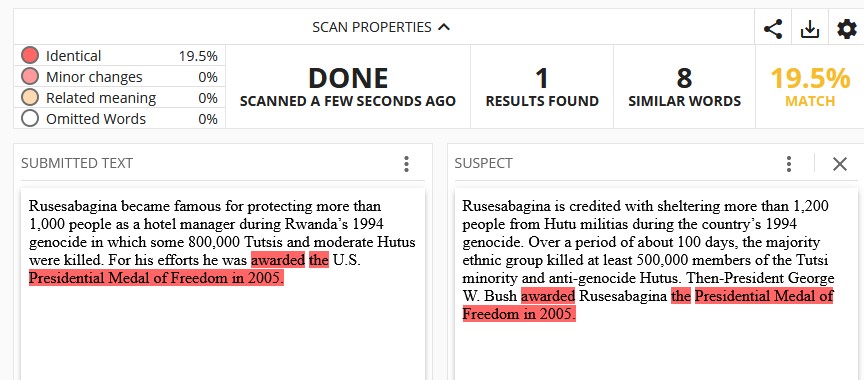



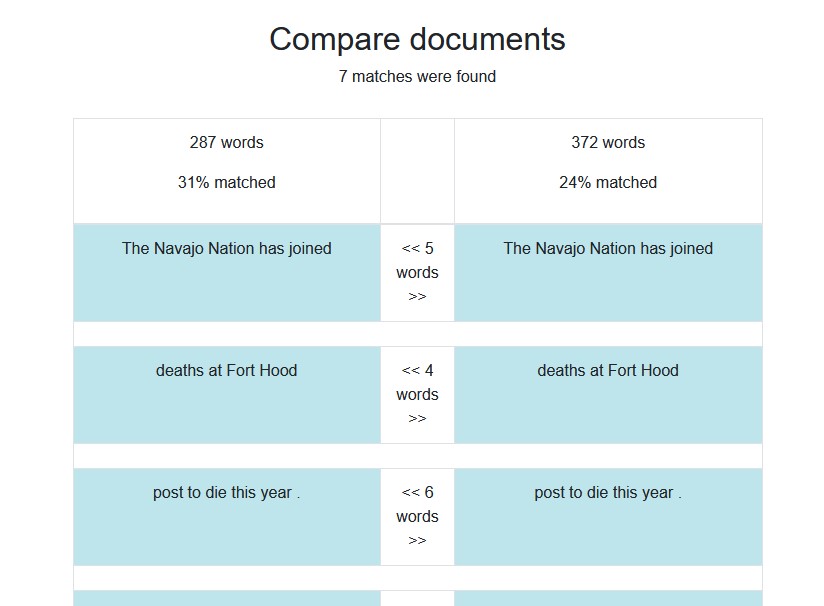

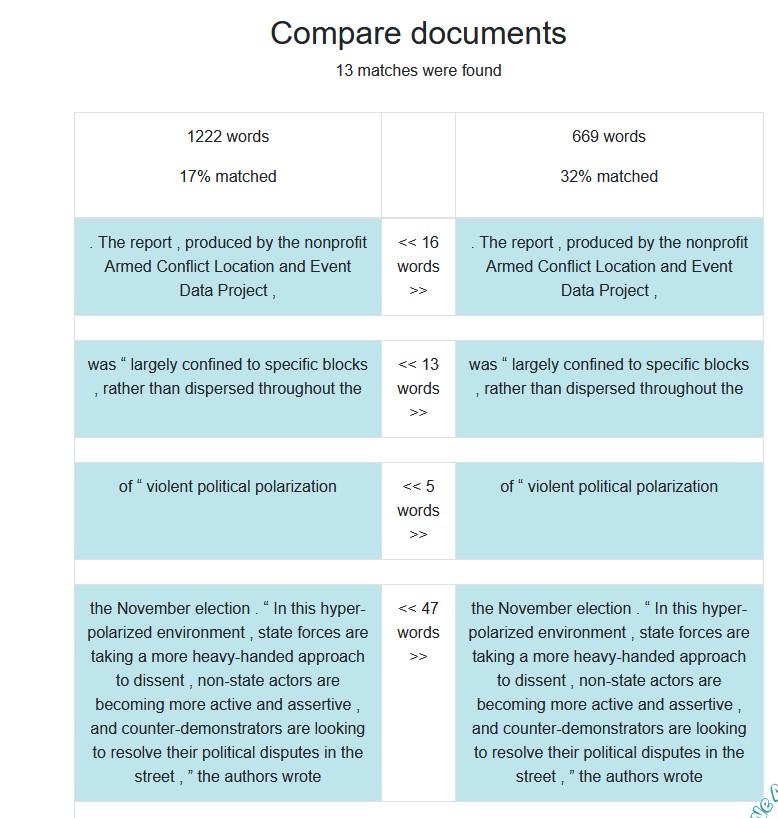



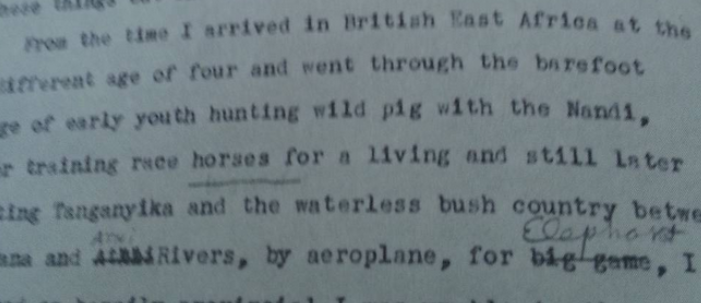























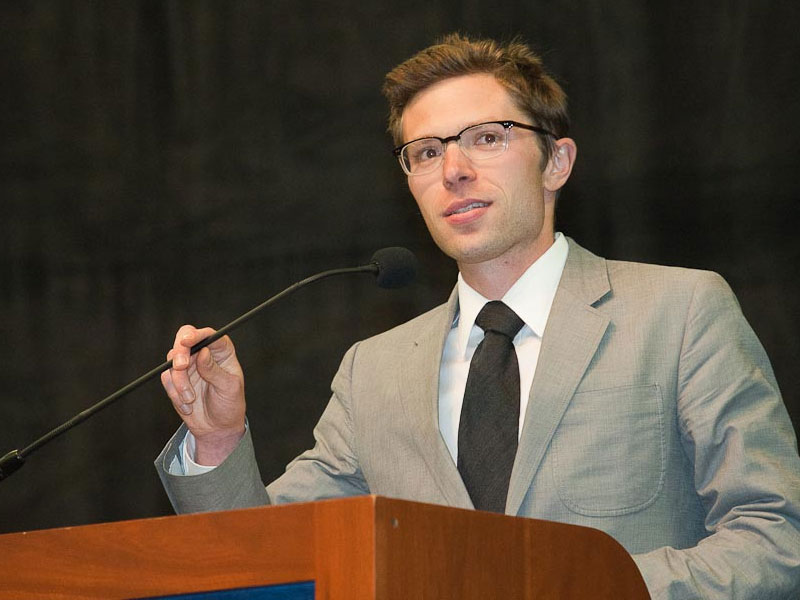

 For more than a decade, I have nursed a grandiose grudge towards Wallace Stegner that has less to do with the eco-friendly West Coast bigshot’s literary streetcred and more to do with my own irrepressible ineptitude concerning matters of the boudoir.
For more than a decade, I have nursed a grandiose grudge towards Wallace Stegner that has less to do with the eco-friendly West Coast bigshot’s literary streetcred and more to do with my own irrepressible ineptitude concerning matters of the boudoir. 